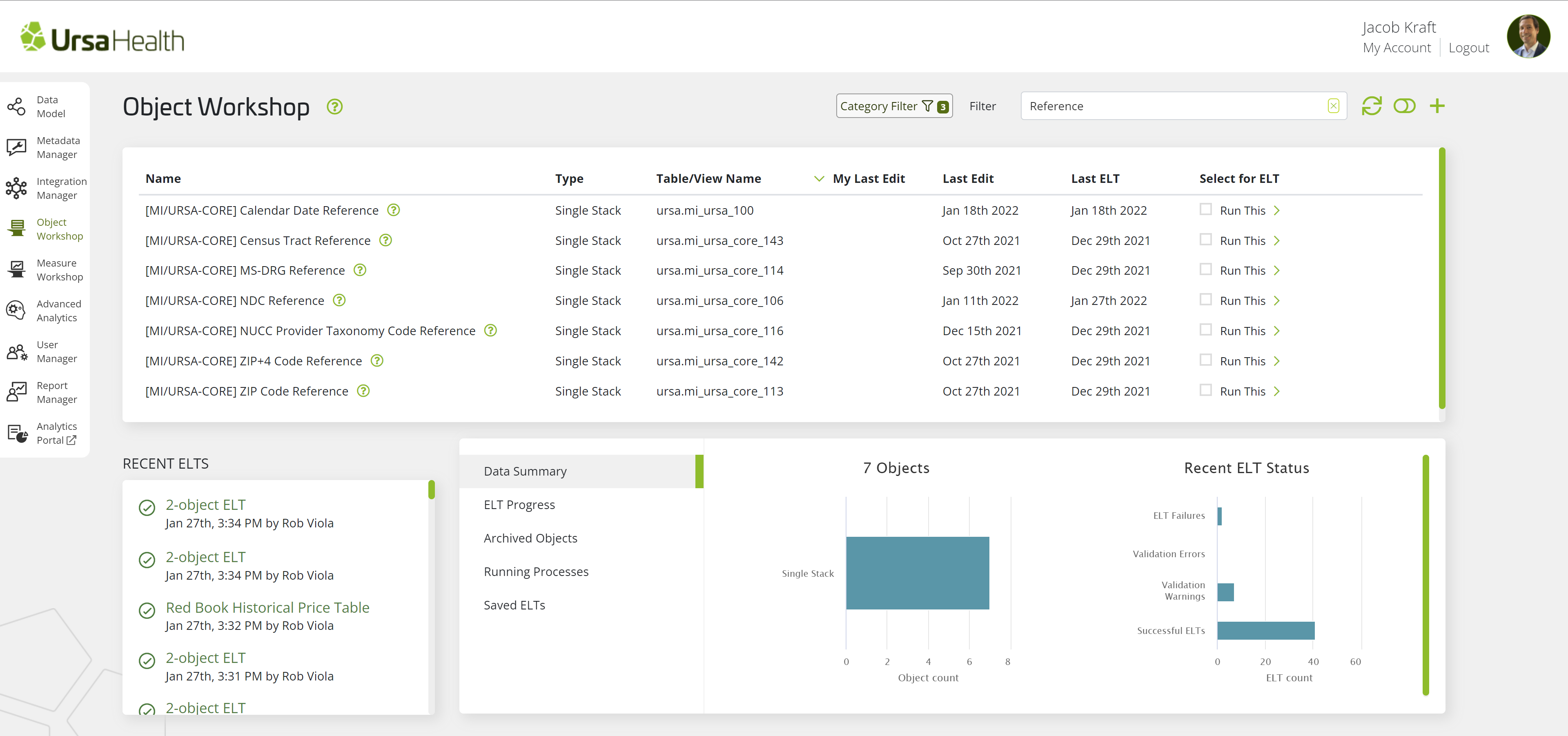
Healthcare data ingestion and integration
Healthcare data integration is the foundation for trusted, flexible analytics: If this step is done incorrectly or incompletely, downstream results from the mapped data will be invalid, and/or certain analytic use cases will be rendered unavailable.
Source data will vary. Ursa Studio enables internal teams to integrate healthcare data in a self-service fashion with an advanced set of software features. Then, to accelerate the process even further, deploy our integration modules pre-built to handle specific types of data, allowing your technical resources to focus on finding answers within the data that accelerate the innovation process.
Lay the foundation for successful analytics
Too often, source data must conform to some standard extract, which burdens the data provider, takes time, and causes relationship strain. Or analytics vendors insist on owning the integration step, a "black box" approach that reduces trust in the process and potentially limits use cases. Or internal teams write code in an unsupported way, which takes time and creates additional technical maintenance burden.
For Ursa Studio users, “healthcare data integration” is not merely reformatting source fields; instead, it is the full preparation of an enriched enterprise reporting environment. With a unified toolkit for accessing source tables, accommodating the variation in expected concepts, and wrangling the ones unique to that source, users can glide through no-code interfaces to review individual cases and iteratively develop accurate logic. The output is a comprehensive data model that serves as the high-integrity foundation for all downstream analytic building blocks.
How you benefit
UNRESTRICT
DIAGNOSE
ENRICH
Start off with a rich tool set
Ursa Studio simplifies and automates some of the more onerous aspects of ingesting raw data, ensuring you have the visibility you need into the process at every step.
For example:
Quickly diagnose issues
Developing and maturing our our own data model means that we are intimately familiar with what it needs to work. We've built very detailed and specific validation rules throughout the data journey to ensure the data is well formed and standardized — no need to worry about building this yourself.
That system of checks and balances begins with data ingestion and integration. Once your data has populated the Core Data Model, Ursa Studio fires a detailed series of validations to help assess whether the myriad concepts that comprise the data model have been structured correctly. For example, Ursa Studio elegantly handles patient mastering, creating a single ID across all data to eliminate duplication.
Issues that may not be readily apparent surface, allowing you to address them before they impact later stages. And every time you transform data, these validations rerun.
Enrich your sources with healthcare reference data
So instead of working with an indecipherable 11-digit NDC pharmacy code, for example, you're viewing drug names, the way each maps to a therapeutic class of drugs, average pricing, and more. Add descriptive fields to raw data code fields, create custom value sets based on your internal business logic, interpret complex data sets, and more.

Minimize resources and improve accuracy with integration accelerators
In addition to the rich software feature set of Ursa Studio, organizations have the option of deploying an array of Ursa Health Integration Modules to expedite the process of working with specific types of healthcare data. Modules bundle up specific mapping and interpretation logic for selected data extracts.
For data sources that are less standardized — for example, a health plan claims data package — the modules provide broad guard rails and validity detection tools to support the user. For data sources that are more standardized — for example, packages from CMS or from an EMR database — the modules essentially automate a large portion of the integration work.
Below are examples from growing list of Ursa Health Integration Modules.
ACO REACH data
Generic claims data
Generic EMR data
Canvas EMR data
Humana Service Fund data
athenahealth EMR data
Want to learn more about Ursa Studio?
We've got more to tell you. Use any of the following links to learn more about our:
- Healthcare data integration
- Healthcare data model modeling
- Healthcare analytics development
- Healthcare business intelligence
- Healthcare reference library
- Master data management
- Native ELT / Interoperability
- Security

